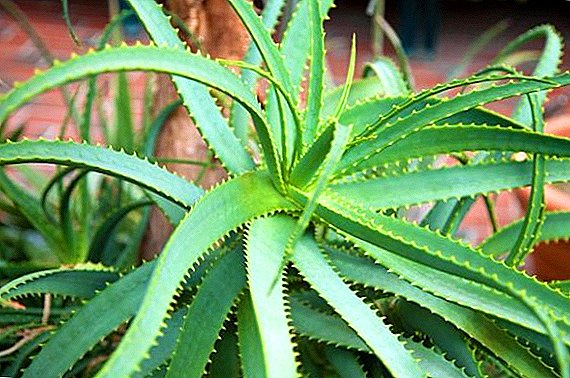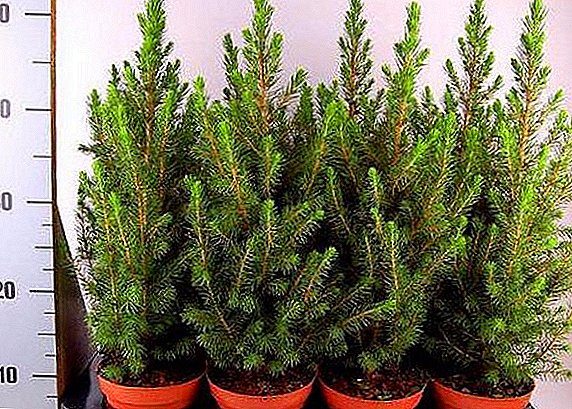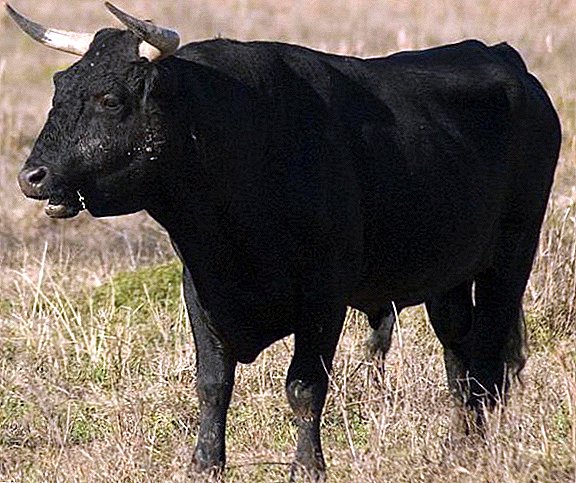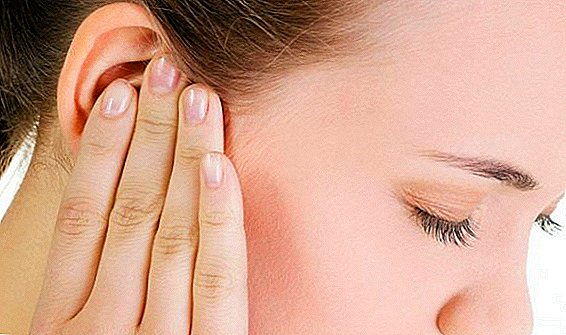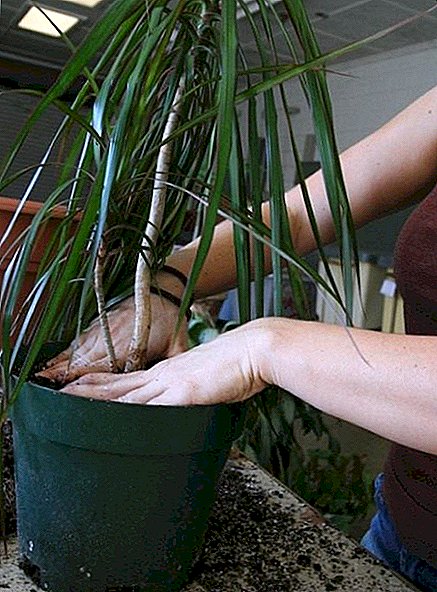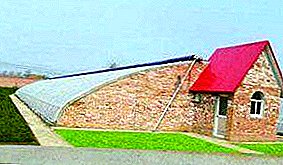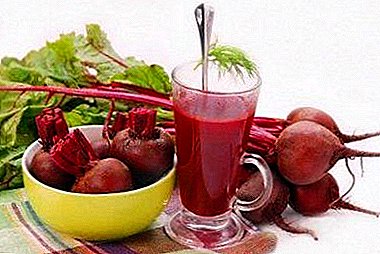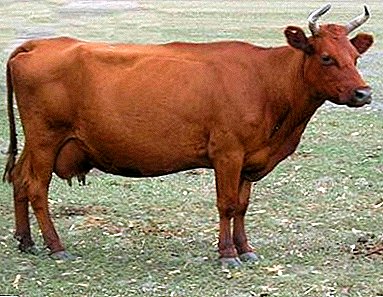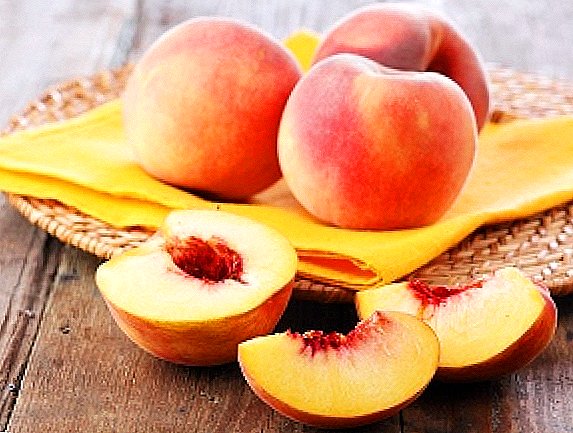 Now you can see a growing peach tree in every garden. But not always its harvest can please the owner. Why is that?
Now you can see a growing peach tree in every garden. But not always its harvest can please the owner. Why is that?
Surely care for the tree was inappropriate.
Before you choose any option, you need to familiarize yourself with the characteristics of popular varieties. Indeed, for the peach the climate of the region in which it will develop, the composition of the soil and the place chosen for growth are very important.
Only with the observance of all his desires, you will be able to enjoy a rich and high-quality harvest.
Delicious "Redhaven"

These large, oval peaches with hard peels are excellent for both home-grown and commercial ones. Weight them sometimes reaches 150g. The color of the fruit is deep yellow, even orange, with red barrels or dots.
The flesh is very juicy, bright yellow, with small raspberry patches, tender, has a stunning taste and a rich dessert flavor.
These peaches rightfully receive one of the highest grades for tasting. At the top of the fruit, you can see a small hole or bump. The seam on the abdomen is rather superficial. The funnel is average in width and depth. Bone large, with a sharp tip and a blunt base, quite easily separated from the pulp.
According to the time of their ripening, peach fruits are divided into 3 categories - these are early, late and medium ripening varieties. Peaches "Redhaven" are fruits with early maturity. Harvest can be collected in early August.
The trees of this variety are medium tall.. They have a flat, rounded leaf foliage. The leaves are glossy, green, large, with a small jagged edges. Flowers are small, bell-shaped. The yield of this variety is quite high, which is one of its many advantages.
The remaining advantages of the variety "Reyhaven" include excellent taste, large size of fruits and good transportability. These peaches are pretty universal for use.
The downside is low resistance to frost and diseases such as Mealy Dew and blast, as well as a small tolerance of drought and absolute instability to curl.
The main features of peach tree care are regular pruning, full irrigation, timely top-quality feeding of the root system and protection from winter frosts, diseases, and pests.

Pruning a peach tree is carried out in order to improve the shape of the crown, reduce the load on the tree, increase the fruitful period, etc.
Before embarking on this procedure, it is necessary to determine the skeletal branches. Mark the estimated height of the trunk (usually about 50 cm above the bud) and select one of the strongest skeletal branches. The second skeletal branch is selected through 4 buds from the first, on the opposite side of the trunk.
Pay attention that the angle of the branches is not sharp. The next branch is chosen so that when viewed from above, it is located between the first two. After that, the remaining conductor and the rest of the shoots are cut off, and you get the crown of the tree, consisting of three single branches.
Top dressing of peach trees is the annual enrichment of soil with minerals over the entire area of the root system. In late spring, before the formation of peaches, every 14 days it is necessary to water the tree with potash fertilizers.
After the flowering period has ended, and the first ovary appeared on the tree spraying the trunk and branches with this mineral solution: 20g of copper sulfate 10g of boric acid 60g of soda ash 1g of manganese 10 drops of iodine 10l of water.

Watering is very important for fruit trees. With a lack of moisture, peaches will be shallow and crumble prematurely. In scheduling irrigation, one should take into account the climate and the proximity of groundwater where the tree grows. It is necessary to ensure that after watering the soil was moistened to a depth of 70cm and the water did not stagnate.
Preparing for the winter should begin with the fact that next to the seedling they drop two supportsput on a bag covering all the peach tree. On the south side, in the shelter, make several windows for access of oxygen. At the base, the bag is fixed with a load or sprinkled with earth to protect it from stall by a strong wind.
To protect the root system from freezing, the seedling is planted in a large plastic bag with black soil. The edges of the package are left on top just as long as they are enough to close the circumferential circle in the spring after watering.
This will contribute to the retention of moisture and will not allow the ground to dry up, as well as protect young roots from such pests as crush and Medvedka. With the growth of the roots themselves will be able to break through the polyethylene.
After hibernation, in early spring, it is necessary to carry out the first treatment of the tree to protect against pests and various diseases.
Treatment with a 3% solution of Bordeaux liquid helps protect peach from asteriasis, curly foliage, kokomikoza, etc. The next processing is carried out in April, when the tree is already beginning to bloom.
Whitewash stem spring solution of lime with the addition of copper sulfate protect the tree Not only from pests, hidden in the bark, but also suspend flowering, which may be, by the way, due to spring night frosts.
Sunny Jaminat

The shape of these peaches is elongated, slightly pressed on the sides, oval. In terms of weight and size, they belong to large fruits: weight 160g, height about 65mm, diameter about 60mm. At the top of the peach there is a small dimple.
The funnel is deep enough, easy abdominal suture, the stem is short and firmly at the base. The peel is bright yellow with a marbled redness; it is difficult to peel off the peaches, medium density. The flesh is bright orange, very juicy, sweet, with a slight pleasant sourness. Juice is colorless. The bone is average, separates well from the fetus.
Ripening time falls on early SeptemberThat relates this variety to medium peaches.
The trees are low in height, rather middle-growing. The hardwood crown resembles a ball shape, slightly flat on top, sprawling and sparse. Young twigs are colored in two colors. The side that is illuminated by the sun has a red bark, and on the underside of the shoots - the skin is green.
Chechevichki white, in small quantities, medium in size. The leaves are large, glossy, bright green, with small, turning into a large, serrated along the edge to the base. Flowers bell-shaped, large, with a reddish tinge. High yieldranges from 110 c / ha to 302 c / ha. Fruits every year, starting from the third year after planting.
Fruits of a grade "Dzhaminat" possess high transportability. On the tree mature at the same time. Excellent retain their taste and appearance for up to two weeks. The buds are quite resistant to spring frosts. In tasting their taste, these peaches rightly get 4.7 points.
Peach trees of this variety have only relative resistance to such diseases as klyasterosporioz and curly, and also do not tolerate winter frosts very well.

Features care for the variety "Jaminat" that distinguish it from other peach trees, no. Its fruitfulness and good development depend on sufficient watering and fertilizing, increasing resistance to frost and pruning, and, of course, protection from pests and diseases.
When pruning a peach, its crown shape is formed.. If the lower branches of the tree are against each other, then the crown is formed from the number of 4 skeletal branches. The two upper branches are laid at right angles to the lower ones. The distance between the branches of 5 - 6 buds. The third and fourth branches are located opposite each other. The guide is removed, like all other shoots. As a result, we get a tree with four strong branches that will further form the crown.
When planting seedlings the pit is fertilized by two buckets of rotted humuspre-mixed with black soil. Such a composition can be used for top dressing: 10 kg of rotted manure 65 g of potash fertilizers about 80 g of ammonium nitrate 150 g of superphosphates topsoil, taken out of the pit.
Peach trees love enough watering. Water temperature should be within 25 degrees. During the formation of the fruit should be watered trees at least 1 time in 10 days, pouring under each 2 buckets of water. Over-irrigation is also undesirable because it will cause the fruits to crack.
To protect the winter tree desirable wrap with old rags. But cover the tree trunk with spruce or pine branches. This will save not only the trunk of the tree, but also its roots from rodents.
In order to protect the tree from pests and diseases it is necessary to carry out spraying. Before ripening peach buds, it is irrigated with 9% copper chloroxide or 3% Bordeaux acid.
Also double spraying with a 1% solution of copper sulphate with an interval of 5 days or treatment with DNOC (a universal remedy for pests and diseases, 100g per 10 l of water) is also suitable.
Approximately 5 days after the end of flowering, as well as in the summer, the tree is sprayed with such preparations as Decis, Dursban or Karate Zeon.
It is also interesting to read tips on planting cherries.
Universal "Irganai Late"

The fruits of this variety are medium in size, rounded. Their weight is about 140gThe height is 65mm and the diameter is 62mm. The funnel is small, narrow. Base with medium depression. The abdominal suture is slightly outlined. Peach stem is a bit short, easily separated from the branch, thick.
The peach itself is bright yellow, sunny, with beautiful red spots. The fruit is easily removed peel, which has an average thickness and a small touch. The flesh is bright, orange, juicy, tender in taste with barely perceptible fibers.
Juice clear, very sweet with a little sourness. The stone is small, well separated from the fetus. The term of full ripening of the fruits falls on September 5-8, which relates the considered variety to late peaches.
Trees This variety has a sprawling, spherical leafy crown with a slightly flat top. On height and density - medium. They have straight and cranked shoots with a small edge. The buds consist of three parts, two of which are generative, and the middle is necessarily vegetative.
The leaves are broad, elliptical in shape, pointed at the base and edge. Flowers medium-sized with a reddish tint. Flowering occurs in mid-April. Petiole up to 10 mm long, pigmented. Fruiting occurs, to a greater extent, on mixed shoots.
Productivity ranges from 87 c / ha to 208 c / ha. Peaches ripen simultaneouslywhich is preferable for small gardens, because it is possible to immediately take the whole crop.
The virtues of this variety are good fruit transportability. The shelf life is up to 10 days from the moment of harvest. High tasting taste rating - 4.6 points. These trees bear fruit every year. Generative buds are fairly resistant to spring frosts. This variety is suitable for commercial purposes. It is quite versatile.
One of the main disadvantages is late entry into fruiting, only in the fifth year after landing. The yield is lower than that of Jaminat. Not very resistant to frost, as well as such major diseases of the peach trees as bloom and curly.

If before pruning we see a small number of shoots, this makes it impossible to isolate 3-4 skeletal branches for crown formation. In this case, you need to bring together one pair of branches.
In a tree with three main branches, the first two branches pull together, and in a sapling with four, the second and third branches. If there are no strong branches on the tree, then crown form of shootsthat grew during the year after landing. In this case, you need to wait for the stiffening of the skeletal branches and only then cut out all the unwanted shoots. Otherwise, the angle of inclination of the branches may change and become sharper.
After the crown is formed, and the peach began to bear fruit, the sanitary pruning is done annually. This will protect the tree from moving the fruit bearing to the periphery of the crown, discharge excessive density of branches, and protect healthy parts of the tree from infection by diseases.
It is impossible to feed peach with nitrogen-containing fertilizers in autumn. They contribute to sap flow, and as a result, the tree will not be able to “fall asleep” in time and risks perishing from severe frosts.

The timing and frequency of watering depend on the climatic zone in which the peach tree is planted. To determine the level of soil moisture, it is necessary to take a sample of the earth.
The lump is taken from a depth of at least 40 cm and compressed in the palm of your hand. If the earth crumbles, it means that the soil is not sufficiently moist. Ideally, a lump should stick well and not smear hands. To slow down the sap flow and prepare the tree for the winter, the last watering is done during the autumn digging of the near-stem circle and fertilizer of the soil.
In winter, not only frost is terrible, but also sunburn of the cortex. To avoid them it is recommended to whitewash the trunk and branches of the tree with a solution of limethat will reflect the rays. The same protection measure will protect the tree from pests that have laid their larvae in the bark until spring.
Features of landing for all grades of a peach are identical. The pit should be deep, dug and fertilized 2-4 weeks before the expected date. It is very good to choose a place for a tree near the wall of the house facing south. Then the peach will be protected from the winds and will receive additional heat from the wall heated by the sun.
The tree is planted at a distance of 20 cm from the shelter with a slight slope to the wall. Planting time is better to choose in early spring or early autumn. For the southern regions it is better to schedule for the fall. In this case, the tree from the nursery immediately falls into the landing pit. During the winter it will take root, and in the spring it will direct all its strength to growth.


